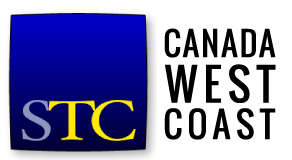(This is the first in a series of articles exploring the world of technical communication from the perspective of specific job titles and functions. This month’s article looks at technical illustrators.)
A technical illustrator creates illustrations that visually communicate complex technical information. These illustrations include drawings, diagrams or photographs that convey accurate proportions and dimensions, with the end goal of enhancing user comprehension.
Perspective, professionalism, a sense of creativity, expert knowledge of graphics programs, and a passion for in-depth knowledge are qualities that lead to success in this role.
Duties
The role of a technical illustrator involves creating different pathways to different audiences. The first is the general public – most commonly conveying general instructions in widely used documents like consumer electronics guides.
Technical illustrations are used in the engineering and scientific community to communicate specifications in complex industries like aerospace. Technical illustrations are also used in user documentation to bridge information from expert to expert.
A day-in-the-life of a technical illustrator might look something like this:
- Creating illustrations at the request of a technical writer, as specified by a Subject Matter Expert (SME).
- Combining pre-existing productions to create new artwork, such as CAD drawings, orthographic plans, photographic references, 3D models.
- Creating graphs, charts, and schematics.
- Creating two- and three-dimensional drawings for technical reports.
- Observing assembly and liaising with those involved in production.
- Editing and applying changes as necessary.
Tools and techniques
- Computer-aided Design (CAD). Creation of 2D and 3D models with software either vector or raster-based.
- Parallel Projections. Drawing method that preserves scale and shape demonstrating projection direction.
- Rapid Prototyping. Construction of a scale model using computer-aided design.
Illustration types
- Line drawings (conventional).
- Exploded view drawing. Representation of assembly order and/or object relationship.
- Cutaway drawing. Depiction of 3D model with surface elements removed to reveal those inside.
- Clip art.
Design software
- Adobe Photoshop
- Adobe Illustrator
- IsoDraw
- CorelDRAW
- Inkscape
Job prospects
In “The technical illustrator: A new picture”, Stefan Hulitschke and Eva Weber suggested that a “renaissance” in technical illustration was underway because the demands of mobile documentation would increase the need for technical illustrators at the expense of technical writers who used to create their own illustrations. While still a unique profession that unites digital age capabilities with pure artistry, technical illustration is marked by a slightly blurred ebb and flow of opportunities for 2016.
In the US, Learn.Org states, “According to the U.S. Bureau of Labor Statistics, employment for drafters, engineering technicians, and mapping technicians was expected to increase 2% in 2012-2022.” This is not a significant hike.
In Canada, an Ontario government job projection grouped graphic designers and illustrators together despite their differences. In the 2013 National Outlook 10 Year Projection, the professional, scientific, and technical services sector accounted for the highest percent of jobs at 50.09%, while information and cultural industries accounted for 13.85%. 17,300 job openings are projected over the 2015-2024 period, but with an expected labour surplus.
Other industries that value the role of a technical illustrator include film and television, web publishing, design studios, and computer game producers.
Becoming a technical illustrator
If you’re interesting in pursuing a career as a technical illustrator, consider a certificate, associate degree, or bachelor degree in technical illustration or graphic design.
You’ll want to develop a portfolio that highlights your CAD tool, three-dimensional design, and line drawing skills, and ensure your portfolio is available online for easy access by potential employers. Contact placement agencies and as well as industries you’re interested in. Consider contract work to get your foot in the door.
For more resources, browse to TechnicalIllustrators.Org .
Megan Alford has a certificate in Technical and Business Writing from Vancouver Community College, is a graduate of the Office Administration with Technology Program from BCIT, and has a Major in Creative Writing and a Minor in English Literature from Concordia University. She’s currently program assistant for BCIT’s Technology Management program.


Nice article, Megan! A great overview.
You might want to submit it for inclusion in the Technical Communication Body of Knowledge (TC BOK for short). Have a look at tcbok.org and review the submission guidelines at http://www.tcbok.org/wiki/contribute/content-standards/submitter-guidelines/. They are always looking for additional material, as the STC is trying to build up its knowledge base so that it can be used as a basis for certification.
Hope to see more from you on this site.
~m